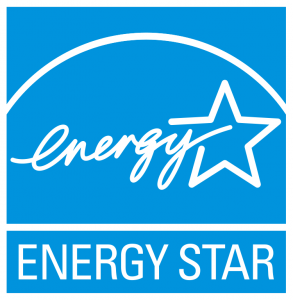Your HVAC system is very important to the comfort and well-being of those who live in and visit your home. Whether you are concerned about the environment or your monthly energy bill, it’s important that your HVAC system be operating at maximum efficiency. If you are currently on the market for a new HVAC system, now is the perfect time to learn about all the different rating systems that are used to measure heating and cooling efficiency. There are a lot of different terms and rating systems that can be confusing, but taking time to do your research and learn about energy efficiency can save a lot of money in the long run.

What is HVAC energy efficiency?
In basic terms, energy efficiency means that the least amount of energy is used to produce the largest effect. A higher efficiency A/C unit will cool your house more while using less electricity, while a higher efficiency furnace will use less fuel to produce the same amount of heat.
Coefficient of Performance
The term Coefficient of Performance (or COP) is used as a measure of the amount of power consumed by a system when compared to the amount power output. COP is a standard metric of efficiency, with larger numbers signifying higher efficiency. COP values for a home heating or cooling unit tend to run from 2 to 4. When you’re shopping for a new system, look for those in the higher end of the range.
Energy Efficiency Ratio
The Energy Efficiency Ratio (or EER) of an A/C unit is the ratio of output cooling energy to the input electrical energy. Cooling energy is measured in British Thermal Units (BTUs), while electrical energy is measured in Watt-hours. EER is measured over a period of time in order to determine the operating efficiency of a given cooling system. While the EER rating will be displayed on the unit, a cooling system must be periodically evaluated to ensure it is still operating at its sticker EER value. Regular maintenance of your HVAC system is important in making sure your cooling system operates as efficiently as it is intended to.
Seasonal Energy Efficiency Ratio (SEER)
The Seasonal Energy Efficiency Ratio (or SEER) of an HVAC system has a lot in common with the EER, being the ratio of output cooling energy (in BTUs) to the input energy (in Watt-hours). SEER goes beyond EER, by taking into account how a unit will function over a season as temperatures vary. You should look for a SEER rating of 15 or higher to ensure that your HVAC system will operate at full efficiency in all temperatures, winter or summer. Systems with higher SEER ratings tend to need less HVAC service and need to be replaced less frequently, while using less energy.
Heating Seasonal Performance Factor
The Heating Seasonal Performance Factor (HSPF) is a measure of the efficiency of a heating unit. It is similar to the SEER rating, but covers the heating efficiency of an HVAC system. A higher HSPF means that your system will use less energy to produce more heat.
Energy Star

Probably a familiar term to you, Energy Star is a designation created by the Environmental Protection Agency to indicate products that have a higher level of energy efficiency. This rating makes it easier to pick out those HVAC systems that use energy more efficiently. The EPA specifies certain requirements that HVAC systems must have to achieve the Energy Star rating.
Energy efficiency isn’t just for the environment. It will help save you money on energy bills as well as system service and repairs over time.

Give us a call and we’d love to set up a consultation to have one of our Comfort Advisors come out to meet with you and go over all of your options for a new energy efficient system for your home. It gives you the chance to ask all of the questions you have and for us to make sure that you have the proper sized equipment in your home that isn’t working harder than it has to and thus wasting energy and your hard earned money.
Call us at 860-314-1518 today –
we look forward to working with you!!!
www.tmscomfort.com

.
.
.
Courtesy of www.entekhvac.com/an_introduction_to_hvac_energy_efficieny_ratings/






